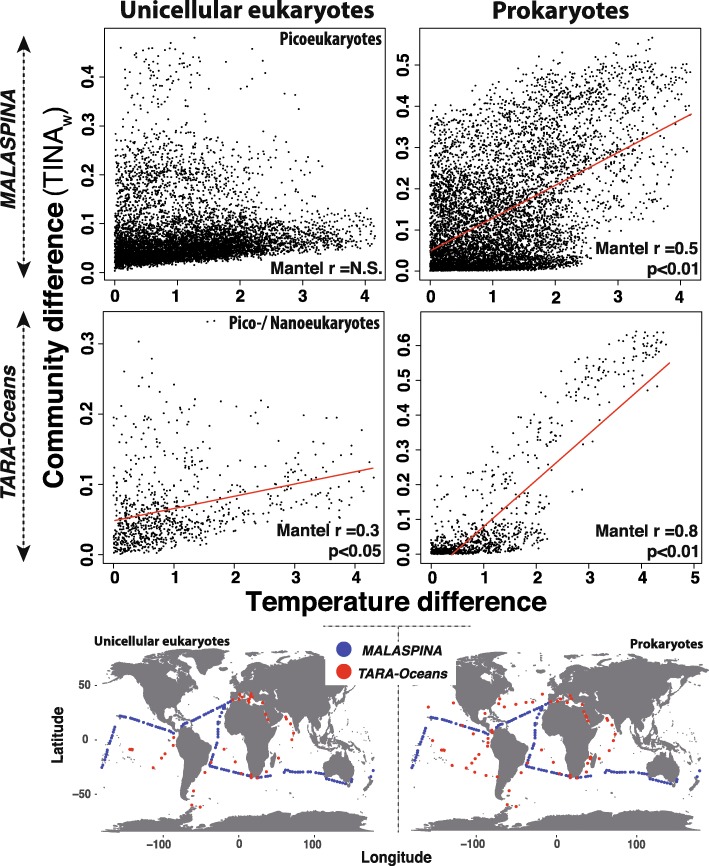Fig. 3.
Temperature-driven selection seems to affect species association networks in prokaryotes but not in pico-/nano-eukaryotes. Differences in community composition (as 1-[TINA-weighted] = TINAw dissimilarities) vs. temperature differences (as Euclidean distances based on dimensionless z-scores) for both small unicellular eukaryotes and prokaryotes sampled during the Malaspina and TARA Oceans expeditions. Note that, in contrast to other indices, TINAw considers species-association patterns (i.e. co-occurrences and co-exclusions ) when estimating β-diversity [26]. NB: While only picoeukaryotes were included in Malaspina (cell sizes < 3 μm), TARA Oceans data included pico- and nano-eukaryotes (cell sizes < 5 μm). Pico- and nanoeukaryotes from both expeditions (left panels) displayed low or no correlations between TINAw distances and temperature differences (Mantel test results included in the panels). On the contrary, prokaryotes (right panels) displayed high to moderate correlations between TINAw distances and temperature differences. These differences in the correlations are likely due to the wider temperature ranges covered by TARA Oceans compared to Malaspina (see Discussion). The regression line is shown in red (Malaspina microbial eukaryotes N.S., Malaspina Prokaryotes R2 = 0.3, TARA Oceans microbial eukaryotes R2 = 0.1, TARA Oceans Prokaryotes R2 = 0.7; p < 0.05). The maps at the bottom indicate the surface stations from the expeditions Malaspina (119 stations for both prokaryotes and picoeukaryotes) and TARA Oceans (63 stations for prokaryotes and 40 stations for small unicellular eukaryotes) that were used to calculate TINAw

